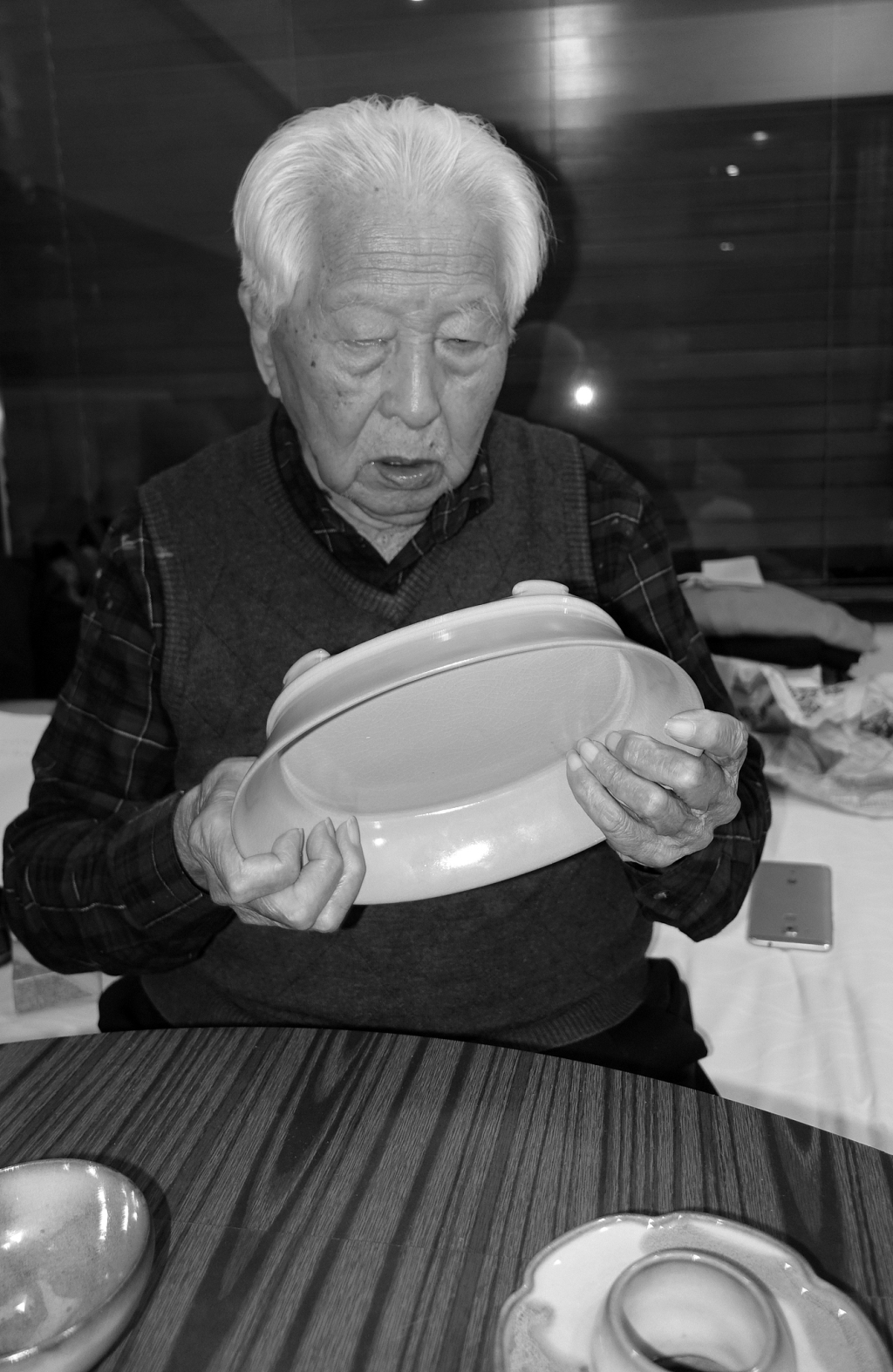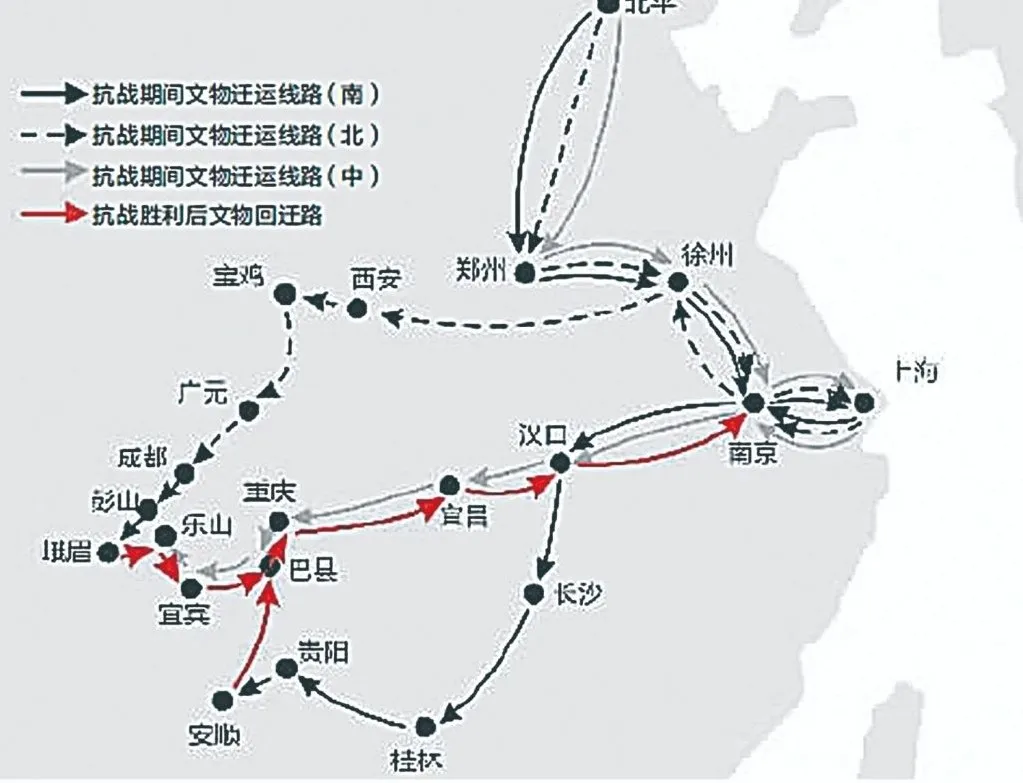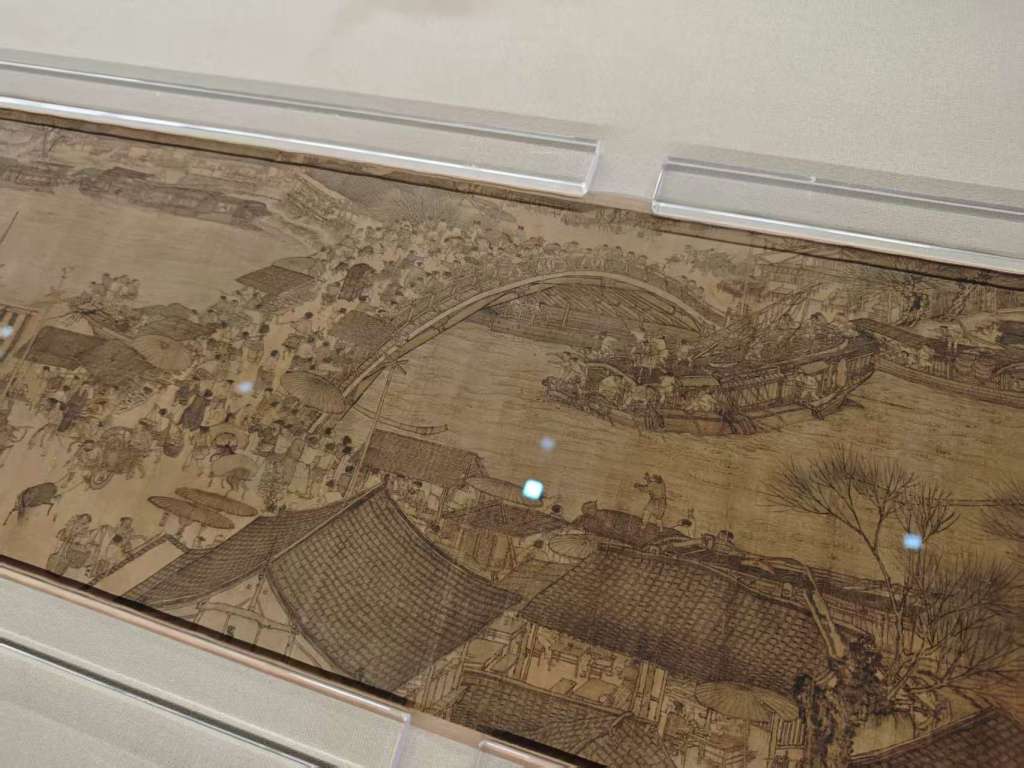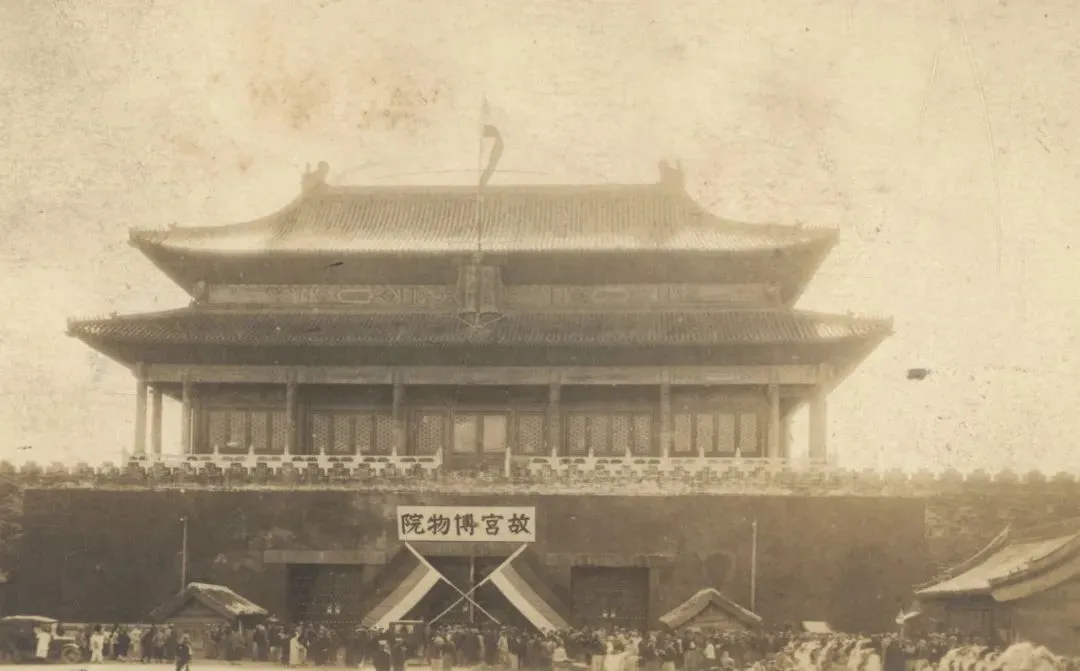
October 10, 2025, is the centenary of the Palace Museum.
A special exhibition titled "A Century of Guardianship: From the Forbidden City to the Palace Museum" quietly welcomes visitors. Meanwhile, in the northeast corner of the Forbidden City, the Qianlong Garden, a once-secret garden, is unveiled to the public as its "Century-long Renovation" progresses. Almost simultaneously, the main structure of the Palace Museum's North Campus project, with a total investment of over 2 billion yuan , has been completed. All of this constitutes a cultural event of profound symbolic significance, offering not only a look back at a grand history but also a step into a living, breathing reality. The Forbidden City's century of guardianship is but the end of a chapter. For this eternal culture, the Forbidden City's protection continues into the future.
In the heart of Beijing, beneath a sea of golden glazed tiles and encircled by a three-kilometer-long vermilion wall, lies the Forbidden City, the world's largest and best-preserved ensemble of ancient wooden structures. It has stood majestically for over six centuries, witnessing the rise and fall of two dynasties. However, compared to its five hundred years as the imperial palace of the Ming and Qing dynasties, its century-long journey as the "Forbidden City"—a museum open to the public—perhaps holds even greater significance. This century marks a remarkable transformation from a strictly forbidden place to a cultural sanctuary, a torch relay that safeguarded civilization amidst war and turmoil, and an epic story of the dialogue, integration, and revitalization of ancient cultural heritage within modern China.

Old photos of the Palace Museum
The End of the Imperial System and the Birth of the Museum
The Forbidden City's fate as an imperial palace officially ended with the abdication of Emperor Puyi on February 12, 1912. However, according to the "Treaty of Favorable Treatment for the Qing Dynasty" signed between the Republic of China and the Qing dynasty, Puyi and his family were allowed to reside in the "back bedroom" area of the Forbidden City, while the "front court" area was taken over by the Republic of China. This split the palace in two, creating a unique situation of a "kingdom" within a "palace." The former imperial residence became a "kingdom within a kingdom," a dislocation of time and space.

The Forbidden City in 1900
The turning point in history came in 1924. On November 5th of that year, Feng Yuxiang launched a coup d'état, dispatching General Lu Zhonglin, the prominent figure Li Shizeng, and others into the Forbidden City with the "Revised Conditions for the Favorable Treatment of the Qing Dynasty." He demanded, in a stern gesture, that Puyi leave the palace within a specified timeframe. This day symbolized the final and most thorough reckoning with China's feudal monarchy. The emperor had been expelled, but what would become of this vast complex, boasting over 9,000 rooms and housing countless rare treasures?
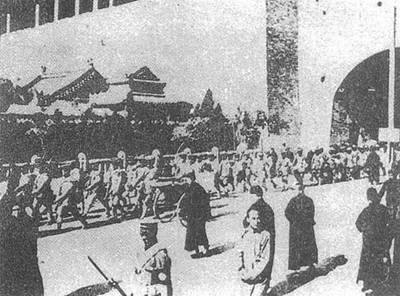
In 1924, Feng Yuxiang launched a "coup" and sent generals into the Forbidden City.
On the day Puyi was expelled, an organization called the "Qing Dynasty Cleanup Committee" was quickly established. Its core mission was to inventory the palace's artifacts in preparation for the establishment of a museum. This was a decision of foresight and courage. It meant that the ownership and significance of this building, which once represented supreme imperial power, would be completely rewritten—from the private property of the Aisin-Gioro family to the public cultural heritage of the Chinese nation.

Qing Dynasty imperial seals in the Palace Museum
After nearly a year of intense inventory and preparation, on October 10, 1925, the plaque reading "The Palace Museum" was hung above the Shenwu Gate. The gates slowly swung open, and the imperial sanctuary, once heavily guarded and a source of dread for the common people, opened its doors to the public for the first time. According to contemporary reports, the streets of Beijing were completely deserted as citizens flocked in, eager to glimpse the emperor's "home." This moment marked a landmark beginning for modern museums in China. From then on, the name "Forbidden City" no longer referred to a bygone dynasty, but rather a cultural palace belonging to all citizens. Its birth was not only a liberation of a physical space but also a profound awakening of the public's cultural rights.
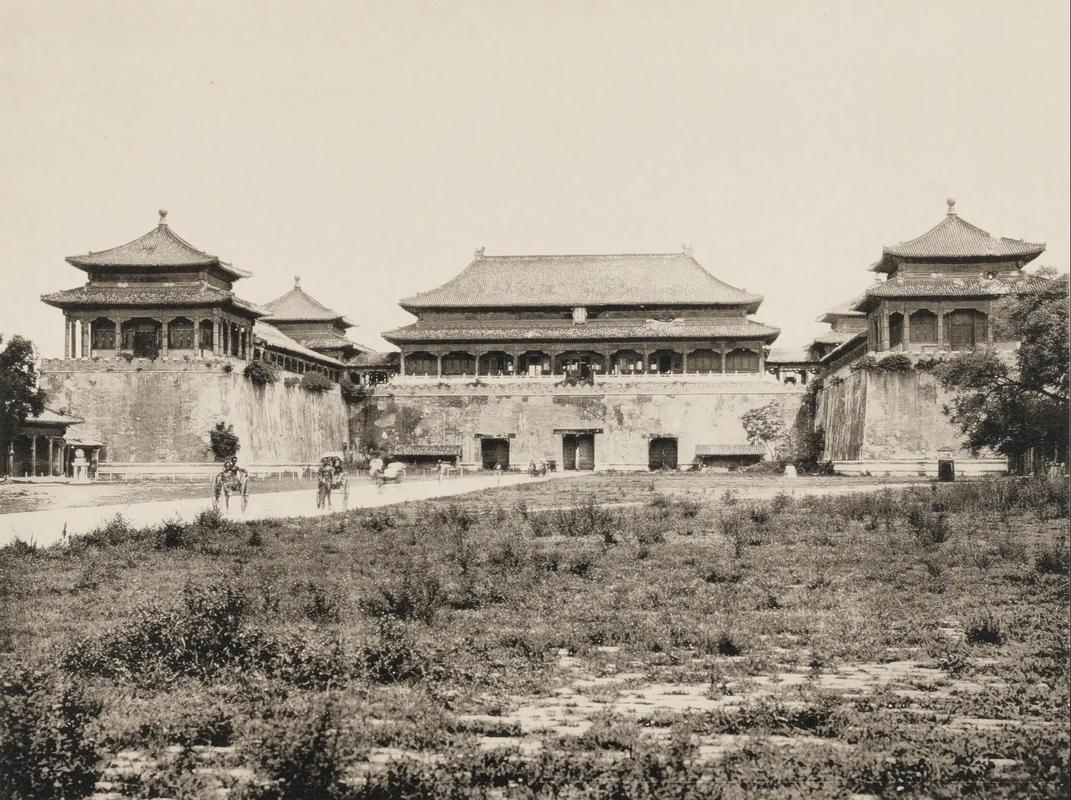
Old photos of the Forbidden City
A miracle in the history of world cultural relics migration
The early years of the Palace Museum were not smooth sailing, plagued by internal and external troubles. However, no one could have anticipated the onset of an unprecedented cultural migration, the arduousness of which, the scale of which was immense, and the profound significance of which it was a miracle in the history of cultural relic migration.
In 1931, the September 18th Incident broke out, leading to the fall of Northeast China and a state of emergency in North China. With the impending storm brewing, insightful figures in Peking keenly realized that the Forbidden City, housing the treasures of 5,000 years of Chinese civilization, was under imminent threat from war. A heated debate erupted within the museum and across the nation over whether to relocate national treasures southward. Opponents were fierce, arguing that the move would unsettle public sentiment and pose a significant risk of damage to the artifacts due to the long journey. However, thanks to the strong advocacy of then-President Yi Peiji and others, the relocation was ultimately approved.
The late night of February 5, 1933, was a moment to be forever remembered. Under strict military guard, the first batch of cultural relics for southward migration departed from Shenwumen Square. A total of 13,427 boxes and 64 packages of artifacts, including bronzes, paintings, calligraphy, porcelain, jades, and ancient books and documents, began their "Cultural Long March," which lasted over a decade and spanned 20,000 miles. This exceptional team first traveled by train to Nanjing, then split into three routes: south, central, and north, traveling to Shanghai, Nanjing, Guizhou, Sichuan, and Shaanxi. They survived Japanese bombing, evaded bandit harassment, and overcame the harsh natural environment, including humidity and termites.

In 1933, the third batch of cultural relics gathered at Taihemen Square waiting to be dispatched.

The first batch of cultural relics waiting to be shipped in 1933 were gathered inside the Meridian Gate
At Huayan Cave in Anshun, Guizhou, Angu Township in Leshan, Sichuan, and the Great Buddha Temple in Emei, Palace Museum staff shared hardships with local residents, storing cultural relics in caves and placing them in ancestral halls, meticulously safeguarding the legacy of national civilization. While the entire migration process was turbulent, minimal loss of cultural relics was truly miraculous. This magnificent migration was not merely a physical relocation; it was also a tenacious continuation of a nation's spiritual and cultural heritage. It declared to the world that a nation may temporarily suffer military aggression, but its cultural roots will never be severed.
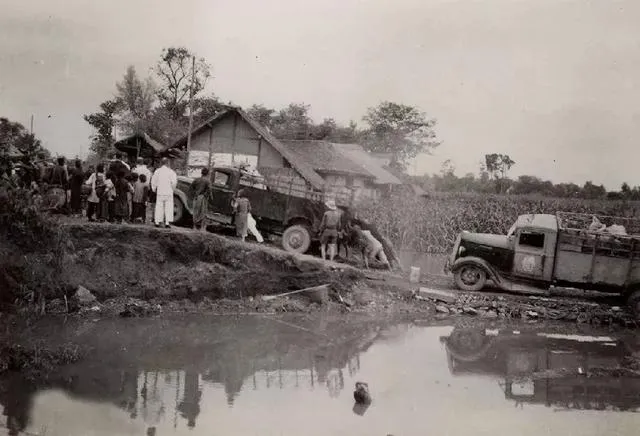
Cultural relics during relocation in 1937 (North Route)
After the victory of the Anti-Japanese War, some of the cultural relics that had been relocated south were transported back to Nanjing. However, with the outbreak of the War of Liberation, the fate of these artifacts diverged again. Between late 1948 and early 1949, the Kuomintang regime selected 2,972 boxes of fine artifacts from Nanjing's warehouses and shipped them to Taiwan in three batches, where they later became the foundation of the National Palace Museum in Taipei. The artifacts that remained in Nanjing, and those that subsequently returned north, became the core collection of the Palace Museum in Beijing, which was then rebuilt and developed in the new China. With artifacts from one palace divided across the strait, there were now two "Forbidden City"s. This history adds a complex and tragic dimension to the Palace Museum's century-long narrative.
Development, twists and turns, and opening up to the world
In 1949, the Palace Museum entered a new phase of development. The government immediately initiated large-scale emergency repairs on the dilapidated buildings, cleared the river, and improved the environment, bringing this ancient palace city back to life. Around the 1950s, the Palace Museum's role as a "museum of ancient art" was further emphasized. It hosted numerous important historical and cultural exhibitions, systematically showcasing the splendid ancient civilization of the Chinese nation.
However, the course of history is always fraught with twists and turns. In the 1960s and 1970s, due to historical reasons, the Forbidden City itself faced significant challenges. Amidst the frenzy of the "Four Olds" campaign, a vast amount of historical and cultural heritage suffered. Fortunately, in 1966, during this critical period, then-Premier Zhou Enlai resolutely ordered the closure of the Forbidden City and dispatched troops to garrison and protect it. This order, like a giant umbrella, temporarily shielded the Forbidden City from the external storm. Despite sporadic damage, the Forbidden City's overall architectural layout and core collections were preserved, a truly great blessing for Chinese civilization.
During these turbulent times, the Palace Museum's guardians demonstrated extraordinary courage and ingenuity. Many staff members preemptively covered important plaques with plaster, boxed and sealed fragile porcelain, and even risked their lives by secretly hiding artifacts deemed "problematic." It's the silent perseverance of these unsung heroes that allows us to witness the former splendor of this cultural sanctuary today.
After the reform and opening up, the Forbidden City ushered in a new era of openness. 1987 marked another milestone in the Forbidden City's history. That year, UNESCO inscribed the Forbidden City on the World Heritage List. This marked the Forbidden City's value as a globally recognized cultural treasure, no longer belonging solely to China but to all of humanity. This recognition significantly elevated the Forbidden City's international status and set higher standards and requirements for its conservation, management, and research.
At the same time, the Forbidden City's "gates" have been opened wider and wider. Visitor restrictions have been gradually relaxed, and tourists from around the world have poured in. No longer aloof and mysterious forbidden zone, the Forbidden City has become a vital window for China's opening up and cultural exchange. Exhibitions are becoming increasingly frequent, and collaborations with top international museums are deepening. The treasures of the Forbidden City are now being presented to the world in a more systematic and professional manner, telling the story of China to a global audience.
During this period, academic research at the Palace Museum entered its golden age. Precision mapping of ancient buildings, systematic organization of cultural relics, and in-depth study of Ming and Qing imperial history yielded fruitful results. Academic journals such as the Palace Museum Journal became important platforms for communication. Generations of Palace Museum scholars, willing to endure solitude, devoted their lives to studying amidst piles of old papers and in the relic warehouses, quietly strengthening the museum's academic foundation.

A detail of the Song Dynasty painting "Along the River During the Qingming Festival" in the Palace Museum's collection
Ancient Building Renovation and Digital Rebirth: From the Forbidden City to the Palace Museum
Entering the 21st century, the Forbidden City embarked on its largest and longest-lasting restoration in its 600-year history: the "Centennial Renovation" program. Launched in 2002 and scheduled to last until 2020, the project aims to comprehensively and thoroughly restore the Forbidden City's ancient architecture.
This is an extremely complex systematic project. It goes beyond simply "restoring the old to its new appearance"; it is a scientific practice that adheres to modern cultural relic preservation principles such as "minimal intervention" and "preservation of historical information." The restoration of areas like the Hall of Martial Valor and the Palace of Compassion and Tranquility served as a precursor, but the Qianlong Garden is arguably the most representative masterpiece of this project. The restoration of delicate craftsmanship within the garden, such as the Juanqinzhai panoramic paintings and the lacquer gauze of the Fuwang Pavilion, is a collaboration between the Palace Museum and institutions such as the World Heritage Foundation in the United States, demonstrating the enormous potential of international and high-tech approaches in cultural relic preservation. This is more than just architectural restoration; it is the awakening of a frozen, exquisitely refined imperial dream.
Almost simultaneously with the renovation of the ancient buildings, another revolution was quietly underway: the rise of the Digital Palace Museum. Faced with a surge in tourist traffic and the advent of the internet age, the Palace Museum keenly embraced digital technology. The establishment of its official website and the storage of the first batch of digital imagery marked the Palace Museum's first steps toward "digital immortality." While its digital achievements at this stage were largely foundational, they laid the crucial seeds for the cultural and creative revolution and media outreach that would later ignite an online phenomenon.
Furthermore, the "2004-2010 Collection Cleaning Plan of the Palace Museum" provides a comprehensive and accurate inventory of the Palace Museum's collection. From 2004 to the end of December 2010, after seven years of comprehensive and systematic inventory and consolidation, the Palace Museum's collection grew from approximately one million items to 1,807,558 pieces (sets). This accurate count of cultural relics is accurate to the last digit, with precious artifacts accounting for 93.2%. This represents the first comprehensive and accurate accounting of the Palace Museum's collection since its founding.

Shenwu Gate of the Palace Museum
In 2012, Shan Jixiang took over as Director of the Palace Museum, ushering in an era of internet celebrity. With his open-minded approach and highly communicative expression, Shan Jixiang catapulted the Palace Museum into a profound cultural and operational revolution. Under his leadership, a series of far-reaching reforms were implemented: environmental improvements and the expansion of open areas. The once-crowded ticket windows were replaced with a modern online reservation system; temporary structures and incongruous modern facilities within the palace were removed one by one; and the open area was expanded from 30% to over 80%. The enigmatic Shoukang Palace, Broken Rainbow Bridge, and the Yanchi Tower at the Meridian Gate were unveiled to the public for the first time. The gradual opening of the Qianlong Gardens exemplifies this "philosophy of openness."
In the cultural and creative industries, the Palace Museum has closely integrated its rich cultural IP with fashion design, developing tens of thousands of cultural and creative products. From "I Know" tape to Palace Museum lipstick, from "Forbidden City Ice Cream" to various apps, the Palace Museum's cultural and creative products boast annual sales exceeding 1.5 billion yuan, successfully transforming its cultural influence into significant market value and bringing traditional culture into the lives of ordinary people with unprecedented intimacy.
Furthermore, the documentary "I Repair Cultural Relics in the Forbidden City" went viral, elevating a group of previously unknown cultural relic restorers to popular idols. Variety shows like "New at the Forbidden City" offer a lighthearted and engaging interpretation of history. The Forbidden City, from a solemn historical symbol, has become a relatable, approachable, and lovable "cultural influencer."
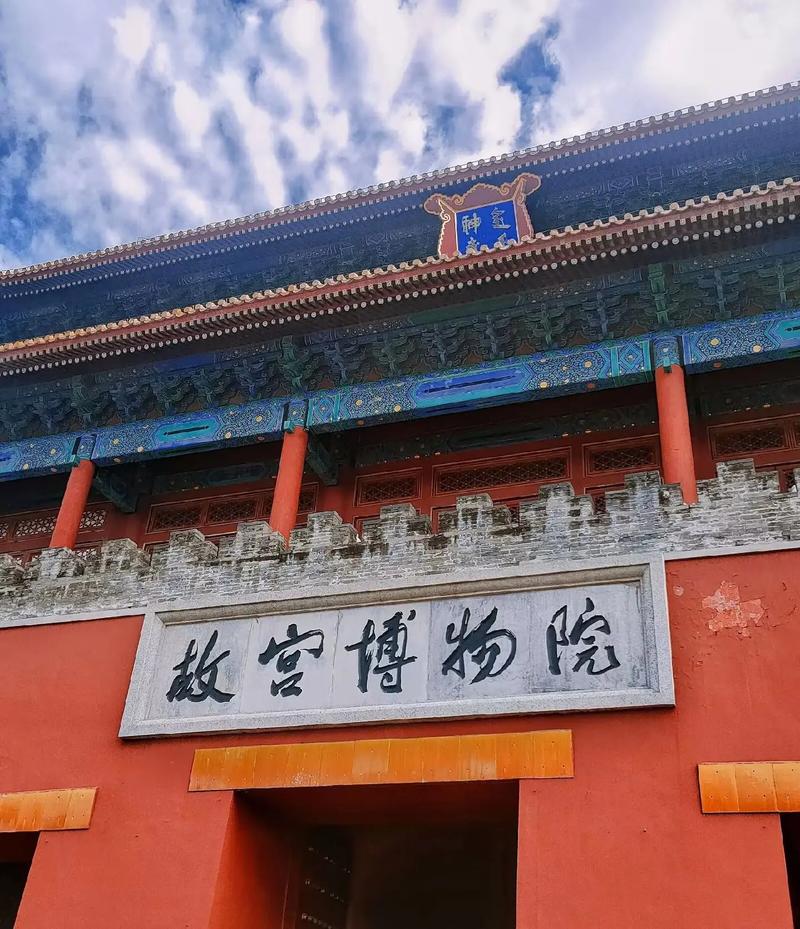
Plaque of the Palace Museum
In 2015, on its 90th anniversary, the Palace Museum announced that the name "Palace Museum" would finally shift its focus to "Museum." This single word carries profound significance. It signifies the Palace Museum's essential transformation from an ancient imperial palace to a modern museum with comprehensive functions, advanced concepts, and a commitment to serving the public.
From the Northern Campus to the Next Hundred Years of Watch
Recently, news broke that the much-anticipated North Campus project at the Palace Museum has completed its main structure, officially transitioning to interior decoration and equipment installation. This heralds a historic leap forward in the preservation and display of cultural relics at the Palace Museum.
The Palace Museum, a world-class repository of cultural and artistic treasures boasting over 1.86 million precious objects, has long faced the unpleasant burden of possessing treasures but struggling to exhibit them. The Forbidden City's ancient architecture is inherently an immovable artifact, and its spatial layout, load-bearing capacity, and temperature and humidity control severely restrict the exhibition conditions for large, precious artifacts. According to statistics, the museum can only exhibit approximately 10,000 artifacts annually, less than 1% of its total collection. Numerous precious artifacts remain hidden in storage, never to be seen by the public. Coupled with the annual influx of over ten million visitors, the ancient Forbidden City faces immense pressure to preserve and operate.
It is against this backdrop that the planning and construction of the North Campus of the Palace Museum, located in Xibeiwang Town, Haidian District, has been prioritized, becoming a major cultural facility within the nation's 14th Five-Year Plan. Rather than a simple branch or warehouse, it will be a comprehensive modern museum campus integrating cultural relic collection, exhibition, restoration, research, education, and leisure activities. According to a recent report from Beijing News, after meticulous construction, this new cultural landmark, with a total investment exceeding 2.1 billion yuan, has taken shape, with completion expected in May 2026.
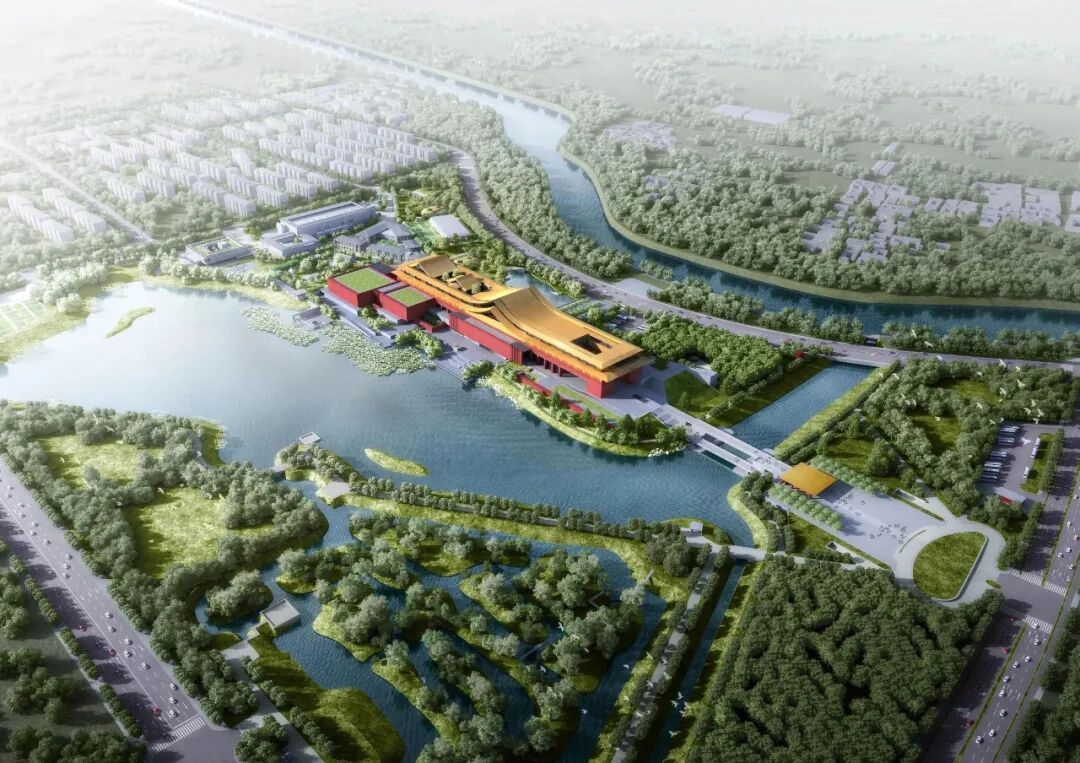
Rendering of the Palace Museum North Campus project
From an aerial view, the architectural outlines of the North Campus are already apparent. Its design draws on the Forbidden City's classic central axis layout and the color schemes of its architecture. The golden roofs and red walls, set against the backdrop of distant mountains and green trees, create a majestic aura, a direct connection to the main Forbidden City. This expansive 115,500 square meter space offers unlimited possibilities for the future development of diverse cultural programs.
From 1925 to 2025, the Forbidden City's century has been one of turmoil and rebirth, of preserving heritage and innovating. It has transformed from an imperial city symbolizing isolation and privilege to a museum representing openness and sharing; from a "living fossil" of history to a "living body" actively participating in modern cultural creation.
For the past century, generations of "Palace Museum people" have guarded the 600-year-old Forbidden City with reverence for history, a sense of national responsibility, and a passion for civilization. They are not only the maintainers of the buildings and the custodians of the cultural relics, but also the interpreters and disseminators of civilization. Now, the baton of this watchful watch is being passed to a new generation. The "Century of Guarding" special exhibition is a reflection of the past; while the opening of the Qianlong Garden and the development of the North Campus of the Palace Museum are declarations for the future.
One hundred years is just the end of a chapter; for eternal culture, the protection of the Forbidden City will continue into the future.
(This article refers to relevant documents of the Palace Museum)
